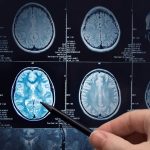Introduction
Think of medical imaging as a window pane. Sometimes the glass is clear, allowing doctors to see every intricate detail of the body. At other times, it is fogged or blurred, obscuring what lies beneath. Super-resolution techniques act like skilled glass polishers, removing that haze and sharpening the view so that hidden details come alive. In this space, technology isn’t just about computation—it’s about restoring clarity where lives may depend on precision.
The Puzzle of Blurred Details
Imagine trying to solve a jigsaw puzzle with pieces that have faded images. The overall structure might be recognisable, but the finer elements are lost, making the complete picture difficult to interpret. This is exactly what happens when radiologists encounter low-resolution scans. Tumours, fractures, or subtle tissue variations may appear too vague for confident diagnosis. Super-resolution fills in those faded puzzle pieces using algorithms that reconstruct missing details, transforming a blurred scan into a sharper and more informative image.
For professionals pursuing advanced roles, the metaphor becomes even clearer: just as puzzle solvers need sharper pieces, future specialists enrolled in a Data Scientist course must learn how to sharpen raw data into actionable insights.
Super-Resolution as a Digital Microscope
Super-resolution techniques can be likened to turning an ordinary magnifying glass into a powerful microscope. Where a standard scan offers a broad view, these advanced algorithms zoom in digitally, revealing structures invisible at first glance. This isn’t about enlarging pixels, but about reconstructing lost details through deep learning models trained on vast repositories of medical images. Convolutional neural networks, generative adversarial networks, and transformer-based architectures are now commonly employed to recreate textures and contours.
This transformation resonates strongly with learners in a Data Science course in Mumbai, who explore how machine learning can breathe life into raw data and discover patterns invisible to the naked eye.
The Role of Deep Learning in Clarity
Think of a seasoned artist restoring an old painting. With each careful brushstroke, faded colours and hidden shapes emerge. Deep learning models perform the same task in medical imaging—painstakingly reconstructing missing features so that doctors can read scans more accurately. These models learn from thousands of reference images, developing the ability to predict what a missing detail should look like.
A CT scan of the lungs, for instance, may appear grainy due to low-dose imaging techniques aimed at reducing radiation exposure. Super-resolution algorithms can restore clarity while maintaining safety, allowing clinicians to diagnose with confidence. In the same way, individuals training through a Data Scientist course learn to restore clarity in datasets clouded with noise, finding truths hidden within ambiguity.
Applications That Save Lives
Consider an emergency scenario where a patient arrives with symptoms of a brain stroke. A blurry MRI could delay crucial treatment decisions. Super-resolution ensures that key features like blocked vessels or haemorrhages are visible within minutes, guiding timely interventions that save lives. In oncology, clearer imaging means tumours can be detected earlier, even when they are minuscule. For orthopaedics, super-resolution can reveal fine cracks in bones that standard imaging might miss.
Beyond the clinical realm, the same principles guide aspiring analysts in a Data Science course in Mumbai, where they learn that sharpening information—whether in pixels or numbers—directly impacts real-world outcomes.
Ethical and Practical Considerations
Yet, the power of super-resolution brings responsibility. Over-enhancement could create false details, potentially misleading clinicians. Therefore, balancing accuracy with authenticity remains paramount. Researchers emphasise transparency, validation, and rigorous testing to ensure that the reconstructed image is trustworthy. Hospitals adopting these methods must also consider infrastructure, costs, and training needs to integrate them seamlessly into workflows.
Here lies an important reminder: technology is a tool, not a replacement. Just as no amount of polish can change the original glass’s shape, algorithms must remain grounded in clinical truth rather than artificially beautifying data.
Conclusion
Super-resolution techniques have redefined what medical imaging can achieve. By transforming blurred scans into crystal-clear pictures, they not only aid diagnosis but also redefine patient care standards. Much like an artist restoring a masterpiece or a puzzle solver filling in missing pieces, these methods ensure that every detail matters.
For learners stepping into analytics and imaging domains, the parallels are striking. The journey is about transforming hazy information into knowledge that saves lives. In both medicine and data science, clarity is more than precision—it is hope delivered through sharper vision.
Business Name: ExcelR- Data Science, Data Analytics, Business Analyst Course Training Mumbai
Address: Unit no. 302, 03rd Floor, Ashok Premises, Old Nagardas Rd, Nicolas Wadi Rd, Mogra Village, Gundavali Gaothan, Andheri E, Mumbai, Maharashtra 400069, Phone: 09108238354, Email: enquiry@excelr.com.











